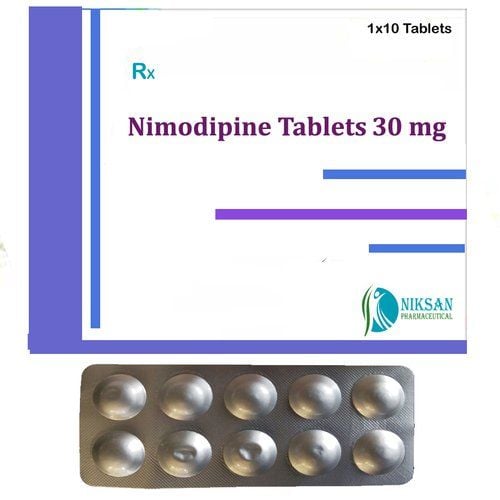This is an automatically translated article.
The article was professionally consulted by Specialist Doctor II Huynh Thi Hien - Obstetrician and Gynecologist - Department of Obstetrics and Gynecology - Vinmec Nha Trang International General Hospital.In the absence of pregnancy, the corpus luteum lasts for 14 days and disappears. If for any reason this does not resolve, this can lead to a corpus luteum cyst. In cases where the corpus luteum continues to grow, up to 3 cm in diameter, the tumor may cause dull pain on one side of the pelvis or may rupture complicatedly, causing acute abdominal pain and heavy bleeding.
1. What is the corpus luteum?
A corpus luteum is formed in the ovary after ovulation has occurred.During ovulation, an egg is released from an overgrown follicle. After the egg is released and subsequently fertilized, the remaining follicle grows larger on its own and forms the corpus luteum, also known as the corpus luteum. This mass of cells from within the corpus luteum helps in the continued production of the hormone progesterone during early pregnancy.
Indeed, during this luteal phase, the corpus luteum will continue to produce progesterone until the placenta produces enough on its own to sustain pregnancy, which usually occurs between 7 and 9 weeks. Progesterone is essential during early pregnancy to prevent uterine contractions, support the growth of the uterine lining, and improve blood flow and oxygen supply. The functioning of the corpus luteum is supported and maintained by the pregnancy hormone human chorionic gonadotropin or HCG. Then, the corpus luteum will begin to decrease in size around the 10th week of pregnancy and disappear.
2. What is a corpus luteum ovarian cyst?
When fertilization or implantation of the embryo does not occur, the corpus luteum or corpus luteum in the ovary, at the site of the newly released egg, begins to break down. The next consequence is a drop in estrogen and progesterone levels, leading to the start of a new menstrual period.On the contrary, if for whatever reason the corpus luteum does not dissolve, it can become the cause of a corpus luteum cyst. At this time, the inside of the corpus luteum will be filled with fluid, possibly the secretion of the follicle, so it is also called a luteal ovarian cyst as a type of functional ovarian cyst.
In most cases, corpus luteum cysts will clear up on their own without any specific treatment. Accordingly, the corpus luteum cyst can disappear for a few weeks after that or it can take up to three menstrual cycles to completely disappear. Therefore, most women with luteal ovarian cysts are completely unaware, until there are symptoms and complications caused by ovarian cysts.

3. What are the symptoms of luteal ovarian cysts?
Some women with luteal ovarian cysts may experience the following symptoms:Pelvic pain, which can manifest as a dull or sharp pain Feeling of fullness or heaviness in the abdomen Bloating Lower back pain , pain radiating to the thighs Pain during intercourse Mild edema, weight gain Dysmenorrhea Chest tightness Needing to urinate more often Difficulty emptying the bladder Difficulty completely having a bowel movement Unusual vaginal bleeding Some women may rupture a lump corpus luteum cyst, causing severe pain and possible intra-abdominal bleeding, shock, and fainting due to hypovolemia.
Larger corpus luteum cysts can promote self-twisting of the ovary, adversely affecting blood flow to the ovary and causing ovarian necrosis.
In some cases, corpus luteum ovarian cysts may persist in early pregnancy. If this happens, the cyst has the potential to cause problems affecting the fetus, potentially causing compression. Therefore, the obstetrician will have a direction to monitor luteal ovarian cysts and appropriate treatment when necessary.
4. How is a corpus luteum ovarian cyst diagnosed?
Laparoscopy may be performed to diagnose luteal ovarian cysts. However, this is never the first choice.In fact, there are a small number of corpus luteum ovarian cysts that can still be palpated on gynecological examination. At the same time, the doctor may perform a number of non-invasive imaging tests to evaluate and diagnose ovarian cysts, including:
Pregnancy test, a sign of the presence of a luteal cyst Control HCG hormone blood test Pelvic ultrasound, using transvaginal or transvaginal transducer Laparoscopy Some doctors may run tests to check the levels of certain substances in the blood to indicate detect ovarian cancer, such as the cancer antigen 125 (CA 125) test. These tests are essential if a luteal ovarian cyst is to be differentiated from any organic cyst, especially when the subject is already thought to be at high risk for ovarian cancer.

5. How to treat corpus luteum ovarian cyst?
Often, as a functional cyst in the ovary, a corpus luteum cyst can resolve on its own without specific treatment. However, in certain cases, treatment is necessary if the person has unpleasant symptoms caused by the cyst.Some options for the treatment of luteal ovarian cysts include:
Birth control pills Surgery to remove large cysts or persistent cysts. The doctor advises the patient and family and determines whether or not treatment is needed based on the size of the cyst, the symptoms it may cause, and the person's age. If the cyst is not causing any symptoms, the woman should be monitored periodically to see how the cyst is progressing rather than starting any form of treatment from scratch.
On the contrary, if delayed or undetected, large size corpus luteum ovarian cyst has the risk of causing acute complications such as ovarian necrosis torsion, intra-abdominal haemorrhage, urgent surgery is indicated. , which can sometimes require removal of one ovary, affecting future fertility.
In short, the corpus luteum helps in the production of hormones that the body needs in the early stages of pregnancy and will go away on its own. On the contrary, the corpus luteum ovarian cyst will grow, fill with fluid inside, causing certain effects. Although in most cases this type of ovarian cyst will go away after a while without treatment, in some cases it can cause serious acute complications, adversely affecting the chances of pregnancy. a woman's future pregnancy.
To determine the type of complete ovarian cyst requires examination, ultrasound and accurate diagnostic tests. Vinmec International General Hospital is fully equipped with medical equipment and experienced doctors.
Currently, Vinmec International General Hospital offers a basic gynecological examination and screening package, helping customers to detect early infectious diseases for easy and inexpensive treatment. Screening for early detection of gynecological cancer (cervical cancer) for female customers even if there are no symptoms or may have the following symptoms:
Female customers have several factors Risks such as poor personal hygiene, unsafe sex, abortion, ... Female customers have other symptoms such as: abnormal vaginal discharge, itching, pain in the intimate area, vaginal bleeding abnormal. Irregular bleeding in the vaginal area Menstrual problems: irregular periods, irregular periods Abnormal vaginal discharge (smell, different color) Pain, itching in the vagina If needed consultation and examination at Vinmec Hospitals of the national health system, please book an appointment on the website to be served.
Please dial HOTLINE for more information or register for an appointment HERE. Download MyVinmec app to make appointments faster and to manage your bookings easily.
References: radiopaedia.org, medicalnewstoday.com













